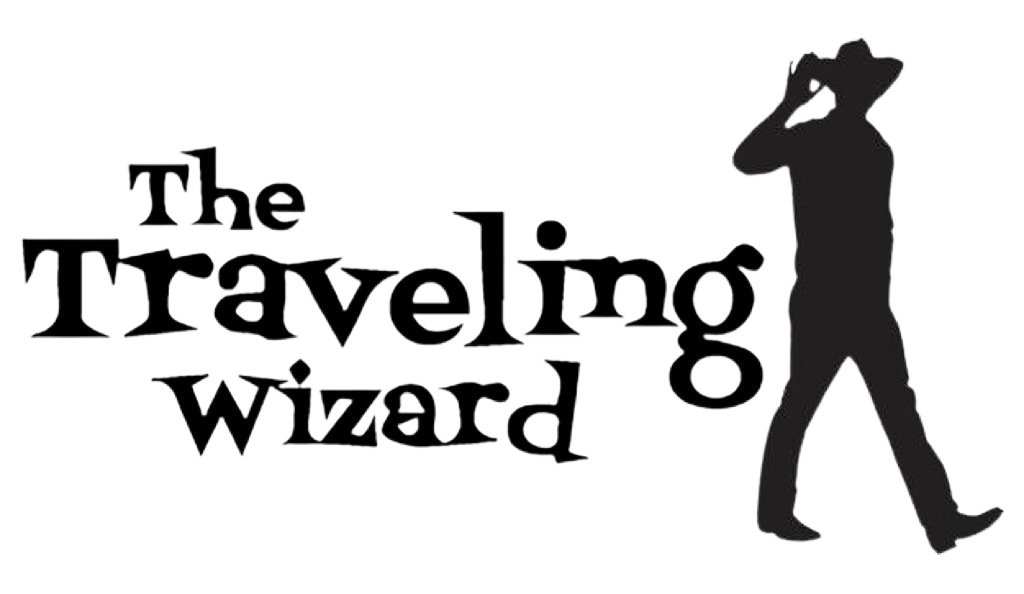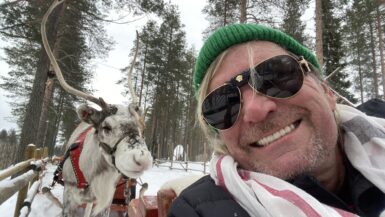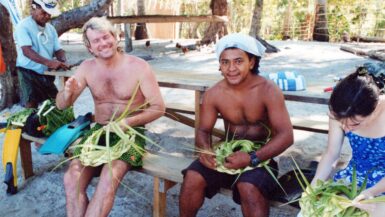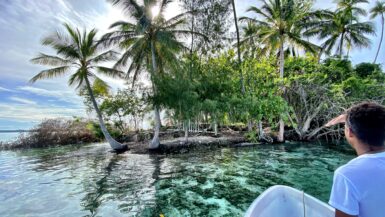I knew two things about Samoa before my plane landed. “Talofa” means hello and one of American most iconic movie stars, Dwayne Johnson is half Samoan. Oh yeah, Samoa is an island. I knew that too.
I’m not alone. There’s not a lot of information for visitors about this gem in the Pacific and what one finds is often hopelessly outdated or just completely wrong. So, I just showed up hoping to figure everything out once I arrived.
There’s a few ways to visit Samoa. One is the the DIY system of success and failure (my normal MO) or the “hire someone strategy”. After a few unsuccessful attempts of trying to see things on my list, I ended up bumping into a Samoan travel expert at a bar (what are the odds?) and ended up doing a bit of both. Geoff from Booking Samoa selflessly guided me in the right direction without selling me tours I didn’t need. Jumping into situations I know nothing about is what I do, but understandably it may not be everyone’s cup of kava. If you don’t want to drive yourself, read a guidebook or make a lot of decisions, call Geoff.
I rented a motorcycle through Booking Samoa at around $20/day and it was a fantastic option. You can also rent cars for about $60/day but you have to go direct to the car hire company and there’s little regard to reservations, office hours or deposits. The only surefire method of making sure your car is available when you arrive, is to connect to a live human and get them to promise you that they have your car. You can also book a transportation package with Geoff or rent a taxi by the hour anywhere in Apia. The last option costs about $20/hr.
Apia is pretty much the only city that has gas stations, multiple hotel options and ATMs. In other places around the island, you can book a room at a resort or go full native. By that, I mean rent a fale, a stilted shack with palm frond moveable walls and a mattress with a mosquito net. Often your fale rental includes a Samoan dinner and breakfast. That is the truly authentic (and less expensive) overnight option.
A word of caution: almost everything shuts down on Sunday, the day that Samoans observe the sabbath and family time. You’ll find no local buses and almost all shops and restaurants are closed. A few of the resorts stay open as well as their bars. I could only find 3 in the entire city.
So you’ve got a way of getting around. Where to go?
Apia– I stayed a couple nights at the Samoan Outrigger hotel and loved it. It was less than $30/night and was basically a fale NOT on the beach. It was simple, with a shared bathroom, but it had electrical power, a mosquito net, free breakfast and a lot of personality. Another night I spent in the Whitehouse, a midrange hotel in town. It had less mojo than Outrigger, but a real bed and a private bathroom. If you’ve got a bigger budget, Tomasina Island Resort is the gold standard. Tonoa rates a distant second. Both resorts have beautiful landscaping and good restaurant/bars open every day. There’s not a lot to see in Apia, but a stop at its outdoor cultural museum in the center of town in T-F 10:30-12:30 gives visitors a crash course in cuisine, customs, and tattoos.
The city’s most iconic building is the Cathedral of the immaculate Conception. It’s beautiful inside and out. The church has an immaculate conception coffee shop next door. The question is, how do they make the coffee? Holy water?
If you need something a little stronger, Apia’s most popular watering hole, Cocktail on the Rocks, is just a few steps away. Order one of their giant local beer table kegs and you’re sure to meet some of the local expats and maybe win a round of pool. There’s a pizza joint next door.
The number one place to visit in the capital is the home of Robert Louis Stevenson. Robert lived the final 4 years of his life in Samoa after creating such literary masterpieces such as Treasure Island and Dr. Jeckyll and Mr. Hyde. His home is a beautiful estate with original furniture and personal effects. Nearby you can visit the botanical gardens and climb to the top of the hill to see his grave. His estate is about 10 minutes south of Apia on Cross Island road.
To Sua – this epic trench located at the southeast part of the island might be mistaken for a Mexican cenote at first glance, but it’s actually a lava tube connected to the ocean. Descend the stairs and arrive at one of the world’s most perfect swimming holes. It’s a beautiful stopping spot located a short distance from the beach on a lava field.
Waterfalls– 3.5 miles north of To Sua is the amazingly beautiful Sopo’aga waterfall. The money shot is in a private manicured yard accessed for a nominal fee. Although hiking to the waterfall is possible, this view is from the opposite side of the canyon. On the same road between To Sua and Apia, you can also access Falefa,Fuipisia, and the more remote Sauniatu waterfall. There’s several other waterfalls scattered throughout the islands if you are a cataractophile. If you don’t know what that is, you’re probably not one.
Giant Clam Sanctuary– located at the southwest area of Upolu island is a sanctuary for Samoa’s giant clam population. There’s no visitor’s center or indication you’ve arrived except for a small sign, some steps leading to the water, and a villager appearing from nowhere asking for $10 tala admission. You need to bring a mask and snorkel to see anything. The water is beautiful on the entire south part of the island and you’ll begin with a white sandy bottom when you first enter the water. As soon as you pass the rope buoyed area, you’ll start to see the clams. The giant ones are impressively huge with bright blue and purple colors. Be careful and don’t put your hand or foot in one.
Cave pool– Another natural feature of Samoa is to be found in the NE part of Upolo. This natural crystal clear pool is freshwater fed and surrounded by fales and outdoor seating. It’s a popular place for families to take their kids and swim in the fresh clear swimming hole. The pool extends into a cave, which makes it infinitely cooler. Tropical freshwater fish swim nonchalantly around visitors. However, if you have a mask with you, you might come face to face with the giant 6 foot eel who resides there. Those without masks don’t have a clue. He’s totally harmless.
Lalomanu– Samoa’s most famous beach is found at the southeast corner of Upola. Not only is the beach beautiful, but the ride down the coastal road is one of the most picturesque on the island. I stayed nearby at Fao Fao fales and had the entire beach to myself. The bathrooms were a little rustic, but I opened the beach side of my fale, and let the crashing waves lull me to sleep. When I’m home,I have my Alexa play “ocean waves” to help me rest, but there’s nothing like the real thing. Dinner was traditional Samoan meal served on a patio overlooking the beach. It wasn’t the fanciest place I stayed in Samoa, but it was my favorite by far.
Savai’i– those who make it to Samoa’s other and bigger island praise it for its natural beauty and laid back vibe. To get there isn’t difficult, but takes a little time. First you must get to Malifanua on the western most end of Upola. Ferries run a couple of times each day in both directions and cost about $30 USD each way for one person with a scooter. Cars are around $60. The journey takes about an hour. There’s several resorts and fales to choose from.
American Samoa– now a U.S. territory that was part of Samoa until 1900, American Samoa is a step back in time. Literally. Talofa Airlines whisks you away in a 9-seater plane for a 30 minute flight. You arrive almost exactly one day before you left. The international date line is inconveniently located between the two island groups and makes for all kinds of messed up hotel bookings and missed flights. American Samoa is considerably smaller and one can drive from end to end in less than a day. There’s a US national park on the island with lots of nice hiking trails that give you views of the entire island.





